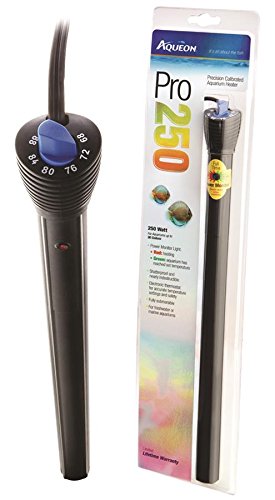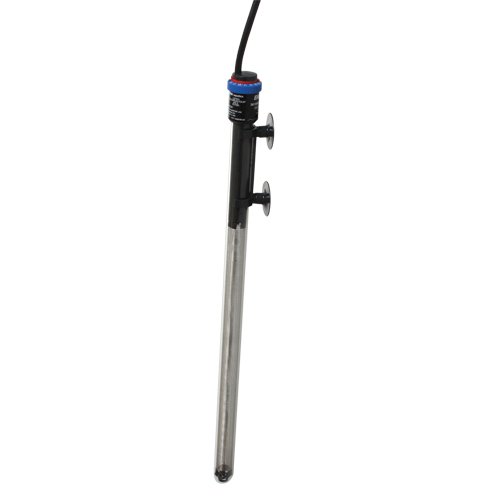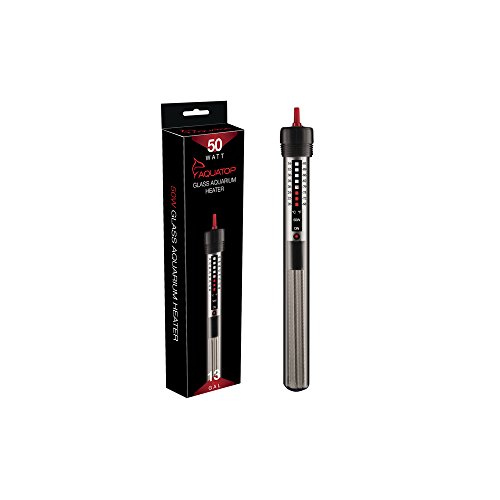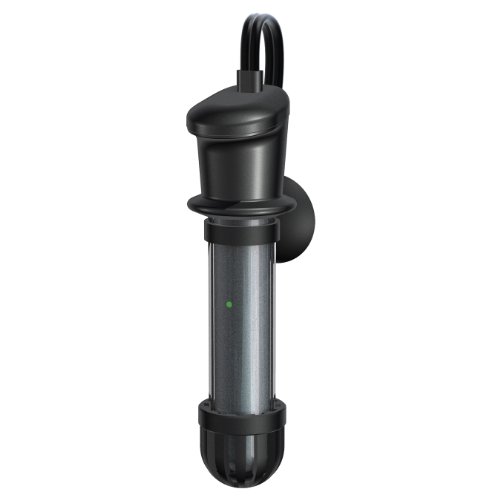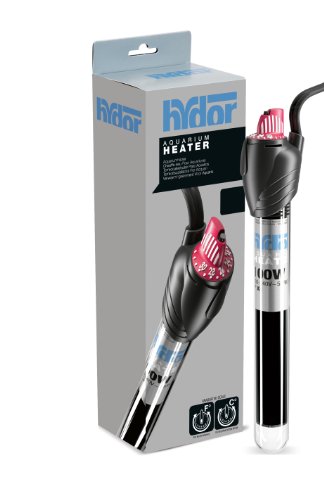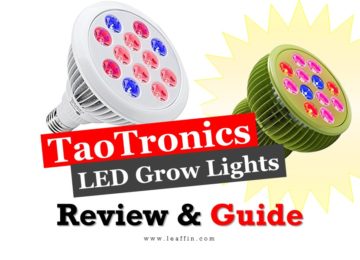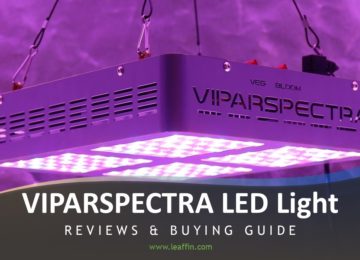To keep fish in your aquarium, you have to maintain the water temperature in a favorable range of fish species. The marine and tropical fish need temperatures higher than 78 degrees (82 degrees Fahrenheit for discus). The heaters are used to gain these higher temperatures and support the warm water species in an aquarium.
The aquarium heaters are equipped with various elements and features to operate efficiently.
Choosing a reliable tank heater is very crucial as the water temperature within an aquarium should not fluctuate more than 1-2 degrees in a period of 24 hours.
For choosing the best aquarium heater that suits your aquarium, there are a lot of models available with different features and specifications. The list below has the test top fish tank heaters available on the market right now. All of these shortlisted heaters are durable and manufactured to deliver impressive heating capacity and performance. Probably the best pick out of all these great options would be the Adjustable Aqueon Pro Heater. Its better heating capacity, safety features, and accurate temperature reading ensures a happy purchase for years to come. Table of Contents If you are looking for the best aquarium heaters on the market, we have shortlisted the top 5 best-selling and highest-rated heaters on Amazon. Following table give an overview of each product. Note: All Heater are Fully Submersible and have a thermostat. The list is compiled for Best Value and Top Rated heaters available online based on deep product research and customers’ feedback. Click on any featured products to visit Amazon’s product page and find genuine customer reviews to read and make a further decision. The core of heater is made up of aluminum (with no glass components) providing it with almost indestructible construction, even heat distribution, and strength. It measures 4 x 14 x 2 inches. It’s available in 5 different watts option (50 /100 / 150 / 200 / 250). The 250W model can easily raise the temperature of a 90-gallon tank up to 15° F above room temperature. Following the instructions in the setup guide, you can easily install this heater in your aquarium. This measures the temperature in Fahrenheit and features an indicator light. You are able to see the temperature controls as it is horizontally built. Its lifetime warranty is a direct signal to the quality of this product in a market full of fussy heaters. This is a huge bonus as you will never get into the problem of a faulty heater again. Click here to check current price on Amazon
Eheim Jager heaters feature an automatic dry run shut off, precise temperature control and temperature recalibration capabilities. The EHEIM Jager heater is made up of shatter-proof and shock-resistant glass for both marine or fresh water. The heavy glass provides extra strength and the power cord is heavy duty. Available in sizes from 25 to 300 watts (25 / 50 / 75 / 125 / 150 / 300). Both of the Eheim and the Aqueon have very attractive features. Compared to the lifetime warranty of Aqueon, this heater has a warranty of only 3-year. Unlike Aqueon’s aluminum, this heater is made up of the glass. Eheim beats the Aqueon heater for marine tanks as it doesn’t have aluminum to corrode away. It also provides better even temp control and easy to access & read thermostat controls. Click here to check prices on Amazon
You can easily maintain stable and constant temperature of water in your aquarium with fully submersible Aquatop GH heaters. The heater is made up of high-quality glass with double insulation wall. You can install it easily by using the suction cups. Both the temperature and bright red colors make the adjustable knob prominent and highly visible. Available in 50, 100, 150, 200, 250 and 300 watts, you can choose a model for a 13 gallon tank (50w) up to 75 gallons (300 watts). Click here to check prices on Amazon
5.2 x 1.6 x 3.5 inches ; 8 ounces The Whisper and HT model submersible heaters by Tetra are designed specifically for heating small aquariums of 2 to 30 gallons in size. Both models are simple to operate, durable and features an electronic thermostat to adjust the heat output automatically and keep the water at a constant temprature of 78°F. This Tetra heaters are best fit to heat a mini or nano reef tank. Available in 50, 100, and 200 watts. Click here to check prices on Amazon
3.5 x 2 x 10 inches ; 8 ounces The Theo Heater works with a heating technology patented by Hydor. The heating component is constructed from a special polymer that is silk printed with special ink. The electric current passing through the ink heats up the element that is in-turn tranferred to the water. It is armed with special shatterproof glass, an on/off indicator light, and a precise temperature setting knob that clicks in 1°F increments. The heater turns itself off if it is not fully submersed to prevent overheating and any damage. Click here to check curent price on Amazon
Here are some important features you must consider when choosing the best heater for your aquarium. The wattage/power of the heater is its capacity to heat and maintain the desired temperature range in your aquarium. The general rule of thumb is that one gallon of water needs 2.5 – 4 watts. Most aquarium heaters range from 25 watts to 300 watts. Larger aquariums require larger heaters. What size heater do I need for my fish tank? Best Aquarium Heaters – Comparison
Aquarium Heaters Available Watts Warranty Temperature Scale Price
Aqueon Pro 50 / 100 / 150 /
200 / 250Lifetime Fahrenheit Check Price
Eheim Jager 50 / 75 / 100 / 125/
150 / 200 / 250 / 3003 years Celsius Check Price
Aquatop Quartz Glass 50 / 100 / 150 /
200 / 250 / 3001 year Fahrenheit & Celsius Check Price
Tetra HT Heater 50 / 100 / 200 3 years Fahrenheit & Celsius Check Price
Hydor Original Theo 25 / 50 / 100 /
150 / 2002 years Fahrenheit & Celsius Check Price
Top 5 Aquarium Heaters – Reviews
1. Aqueon Pro: The highest rated heater on Amazon
2. EHEIM Jager: Widest Range of watts available
3. Aquatop Quartz Glass: Best Selling & Durable
4. Tetra HT: Smallest Footprints & cheapest Price among the list
5. Hydor Glass Original Theo
What to look for in Aquarium Heater?
1. Aquarium Heater Wattage Per Gallon
[/su_note]For a larger aquarium, the best practice is to use multiple heaters instead of a single one following the same wattage/gallon rule.
2. Heaters Types
There are various kinds of heaters available today. They all work differently and you need to determine which one is suitable for your fish tank. Here is the list of heaters types to make up your mind.
1. Submersible Heaters: These most commonly used and durable heaters are placed right in the water. You need to ensure enough space around the heater for your fish to move in the tank freely. These heaters shouldn’t touch the gravel because the difference in heat conductivity can crack the glass. They are generally more efficient as compared to immersible hanging heaters.
2. Immersible Heaters: These heaters are usually hung over the tank with the glass tube that houses the heating component is immersed in water. The aquarium hood needs an opening to accommodate this. The immersible heater can electrocute your fish and even start a fire, if not properly secured. This heater is not recommended for use in marine or brackish fish tanks as it can lead to corrosion in the heater tube.
3. In-Line Heaters: These external heaters are placed in the line between the fish tank and the filter or sump. They are an excellent choice for larger aquariums and avoid any contact between the fish and the heater.
4. In-Sump Heaters: They are placed in the sump and are also easier to maintain. They need more room and provide the similar benefits as in-line heaters.
5. Substrate Heaters: These uncommon heaters usually composed of heating wires that are buried underneath the aquarium substrate. They are perfect for plant fish tanks, where the gravel keeps the plant roots too cool.
3. Thermostat/Temperature Control
You must be able to adjust the temperature settings on your heater. Stay away from the heaters that don't have adjustable knob and come with an already set temperature that makes it impossible to change the temperature if needed.
Choose the aquarium heaters having an adjustable temperature with a large control knob that is easy to handle when submerged.
4. Temperature Readability
The thermometer or temperature scale helps to ensure the water temperatures within a certain range. Some heaters have Fahrenheit scales, others have celsius scale and some have both. You may want a visible reading in your desirable scale. This reading in most heaters may not always be accurate, it’s good practice to have a thermometer as well.
5. Safety Features
You may desire automatic shut off feature in the heater that turns it off when the water level gets too low, or the temperature of your tank gets too high. Another great feature to have in the heater is the light indicator that tells when the aquarium heater is on and actually heating. These security features provide peace of mind and prevent dangerous cold drops and overheating.
6. Aquariums Types
You always need to consider the aquarium type you have before choosing your heater. The manufacturer usually gives more details in the guide about where the heater can be used. There are usually different heaters for saltwater, freshwater aquarium, turtle, reef aquariums, and betta tanks.
7. Energy Efficient Aquarium Heater
A heater will stay on and operating almost always. The electricity cost directly relates to the heating requirement that will add up to your electricity bill. I'll discuss some choices to make for an efficient aquarium heater.
- Use two heaters instead of a single larger heater. Low output heaters last longer and also more efficient than higher-wattage heaters.
- Use a fully-submersible heater. Floating immersible heaters are less efficient.
A larger tank placed in a cold room requires the most energy to maintain temperature. Use insulation and cool-water fish to curb the heating cost.
Conclusions
You should know the optimum temperature needed for your fish. Choose a heater rated for slightly higher capacity than your aquarium to be in the safer side. But be careful about the choice as a 100-watt heater would be over-kill for a 10-gallon tank. If possible, use multiple heaters.
Keep the heater close to the water flow (outlet or inlet from the filter). This makes it easy for the heat to disperse easily throughout the water in the aquarium. Placing an aeration stone under the heater helps in diffusing the warmer water and circulating cold water towards the heater.
To minimize your heating cost, consider where you keep your aquarium. The aquarium will need less heating if it is already kept in a well-heated room. You can also minimize heat loss by using polystyrene or any other insulation material underneath the aquarium and between the aquarium outer wall and room walls.
Further Reading:
Optimum temperature range in Aquaponics

